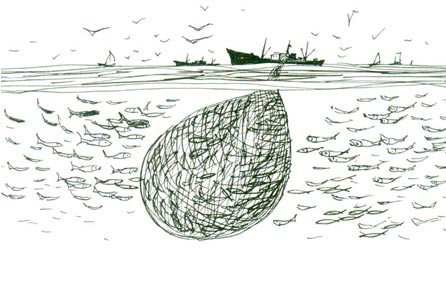Peru is located on the southeast coast of the Pacific Ocean, with a coastline of more than 2,200 kilometers. The coast of Peru is a famous fishing ground in the world. In the 1950s, Peru's fishery output reached hundreds of thousands of tons. After 1962, the fishery developed even faster, with fishing output reaching 6.96 million tons, ranking first in the world at that time. Since then, it has increased year by year. By 1970, it exceeded the 10 million tons mark and reached more than 13 million tons. Peru became a world-famous fishing country. At the same time, it attracted swarms of seabirds and accumulated huge amounts of guano layer phosphate rock on the coast and islands.

Schools of fish flock to Peruvian fishing grounds
Hundreds of thousands of tons of black manure and a large amount of fishmeal are exported every year, exchanging huge amounts of foreign exchange for Peru and becoming an important economic pillar. Peru's developed fishery has attracted world attention, and the fruitful results have surprised Peruvians.
Who created such rich fishery resources in Peru? After investigation and research by scientists, this mystery was finally solved. It turns out that it was the ocean currents that made the difference. However, this kind of ocean current is not the ocean circulation mentioned before, it is a horizontal ocean current. What forms Peru's fishing grounds is another type of ocean current that flows in a vertical direction, called upwelling. Because the speed of upwelling is too small, it only rises about one-thousandth of a centimeter per second, and it rises less than one meter per day, making it difficult to detect. However, people slowly revealed this secret. Scientists can find its whereabouts by analyzing seawater temperature and salinity. Because the water temperature at the bottom of the sea is generally cooler and the salinity is relatively high, upwelling can bring water from the lower layers of the ocean to the surface. Therefore, in places with upwelling, the temperature of seawater is lower than the surrounding seawater. In summer or tropical sea areas, it can be 5-8°C lower than the surrounding seawater; the salinity is also significantly higher than the surrounding seawater. Therefore, as long as you find a sea area where the water temperature is lower than the surrounding seawater and the salinity is higher than the surrounding seawater, you can generally conclude that there is an upwelling here. The upwelling moves slowly because it has to overcome its own gravity, as well as the huge pressure of the seawater above and the resistance of the surrounding seawater. This is just like climbing a mountain on land, which is definitely more tiring and slower than walking on a flat road.
animal tags:
We created this article in conjunction with AI technology, then made sure it was fact-checked and edited by a Animals Top editor.